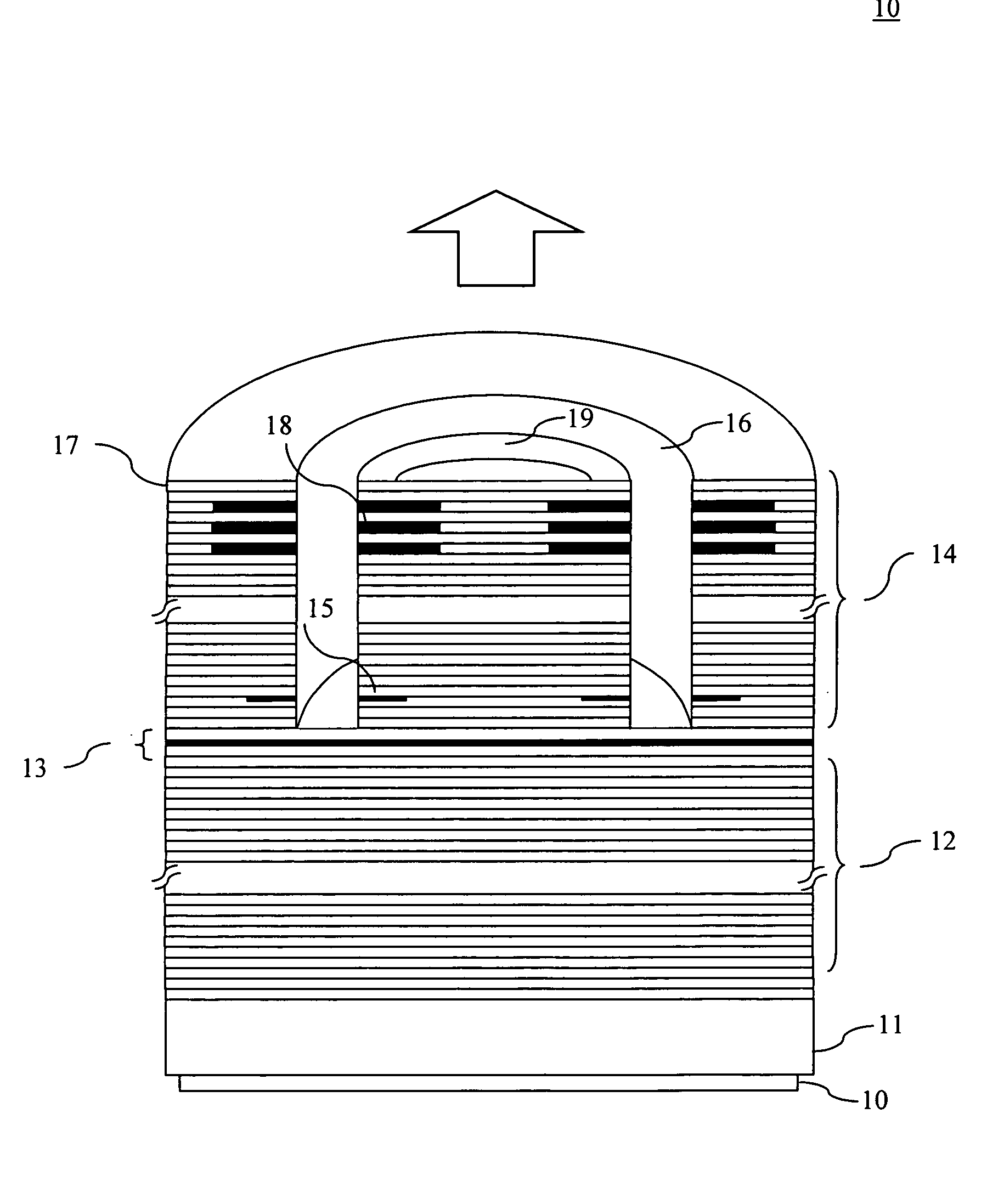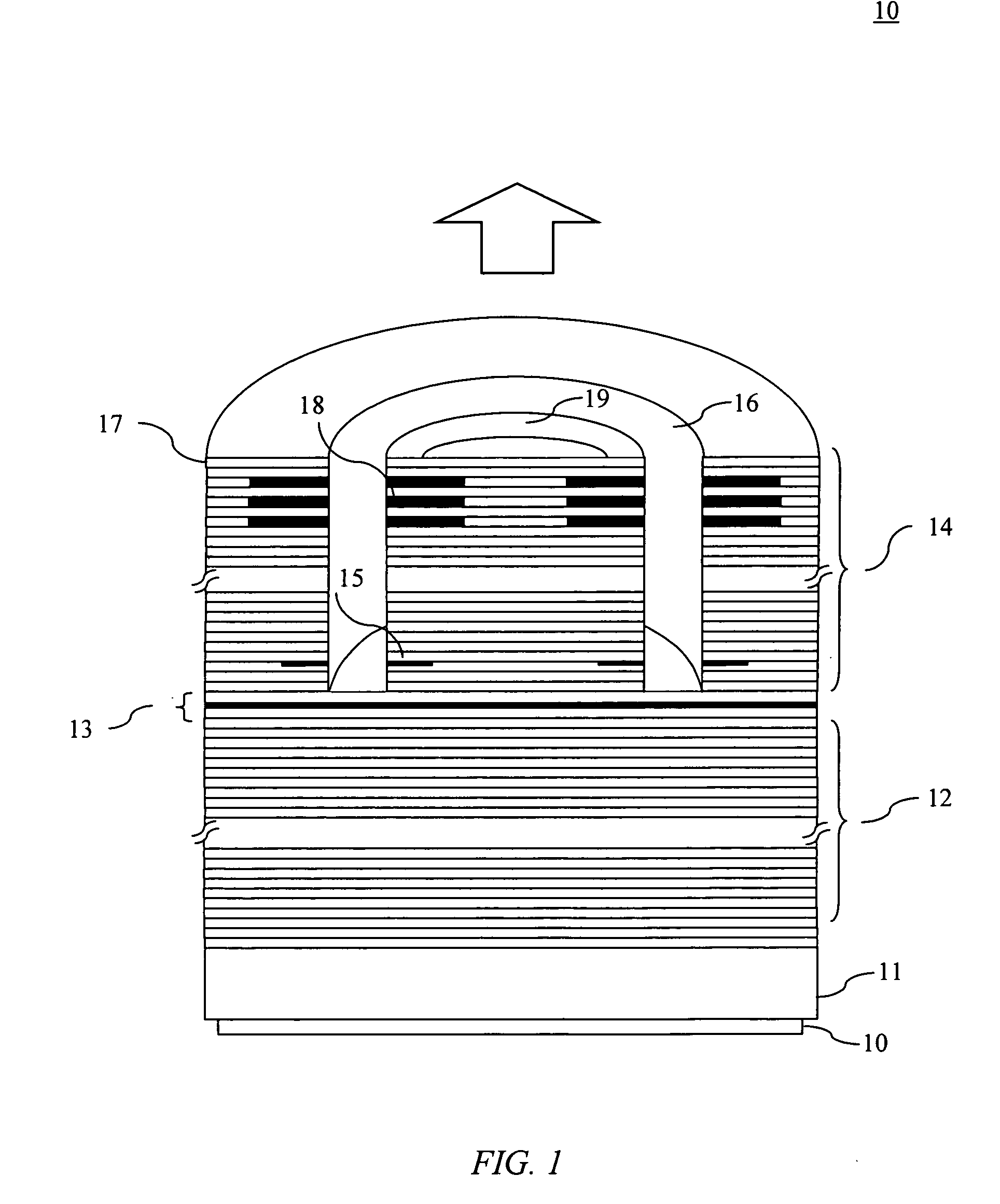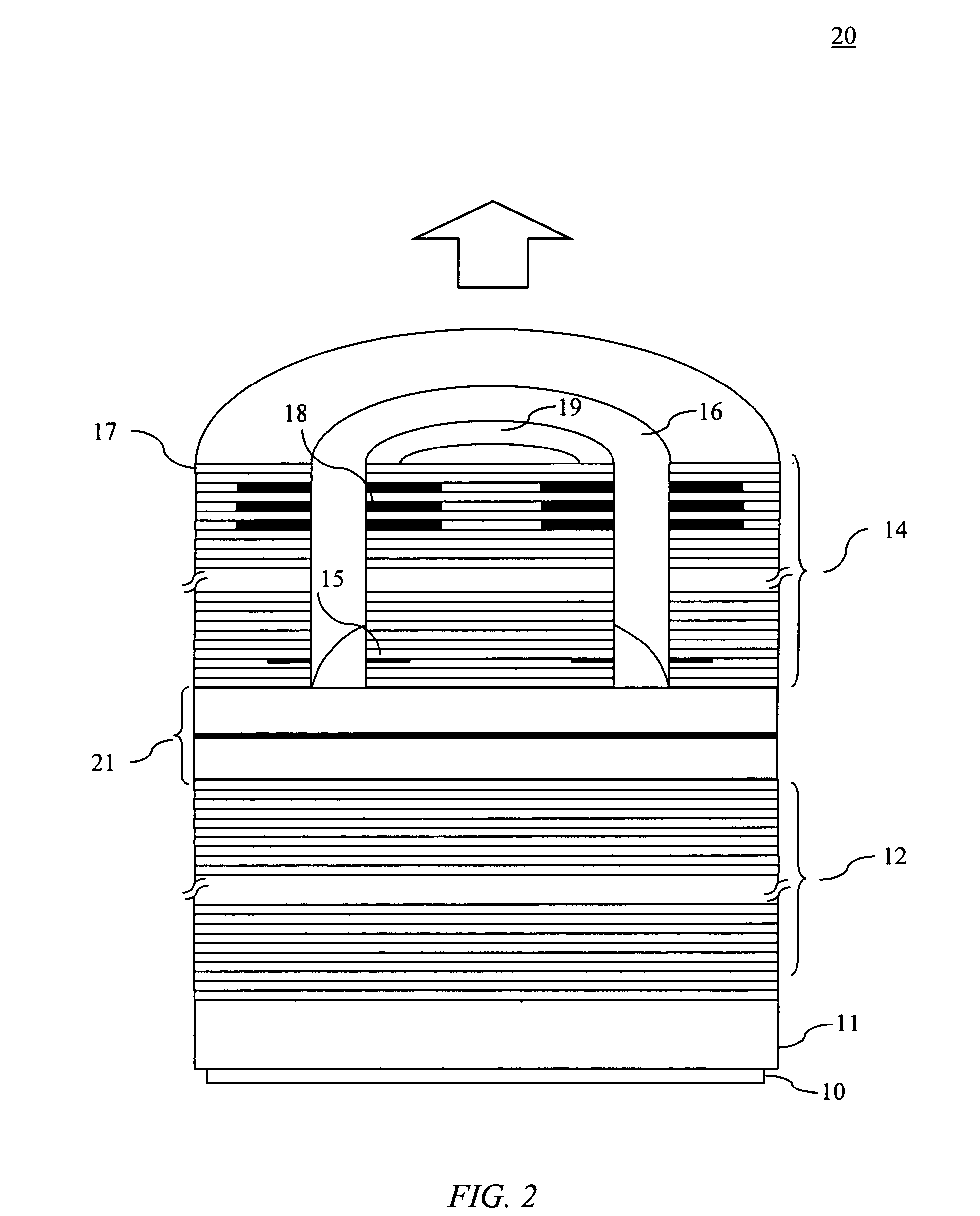Laser diode and method of manufacture
a technology of laser diodes and diodes, applied in the direction of laser details, laser cooling arrangements, semiconductor lasers, etc., can solve the problems of reducing the maximum output power that can be achieved, reducing the life of the device, and limiting the maximum output power. achieve the effect of suppressing the emission of high-order transverse optical modes
- Summary
- Abstract
- Description
- Claims
- Application Information
AI Technical Summary
Benefits of technology
Problems solved by technology
Method used
Image
Examples
Embodiment Construction
[0032] The invention will be more clearly understood from the following description of some embodiments thereof, given by way of example only with reference to the accompanying drawings in which:—
[0033]FIG. 1 is a diagrammatic cross-sectional view of a VCSEL diode of the invention;
[0034]FIG. 2 is diagrammatic cross-sectional view of another embodiment of the VCSEL diode in which mode control selective oxidation layers are used in conjunction with a multiple wavelength active region cavity.
[0035]FIG. 3 is a diagrammatic cross-sectional view of the VCSEL diode when fabricated using a multi-step etch and oxidation process; and
[0036]FIG. 4 is diagrammatic cross-sectional view of another embodiment of the VCSEL diode in which an oxide mode control is implemented on the surface of the VCSEL.
[0037] Referring to FIG. 1, a general schematic representation of a VCSEL diode 10 of the invention is shown. The VCSEL comprises a bottom electrode 10, conducting substrate material 11, a bottom m...
PUM
 Login to View More
Login to View More Abstract
Description
Claims
Application Information
 Login to View More
Login to View More - R&D
- Intellectual Property
- Life Sciences
- Materials
- Tech Scout
- Unparalleled Data Quality
- Higher Quality Content
- 60% Fewer Hallucinations
Browse by: Latest US Patents, China's latest patents, Technical Efficacy Thesaurus, Application Domain, Technology Topic, Popular Technical Reports.
© 2025 PatSnap. All rights reserved.Legal|Privacy policy|Modern Slavery Act Transparency Statement|Sitemap|About US| Contact US: help@patsnap.com



